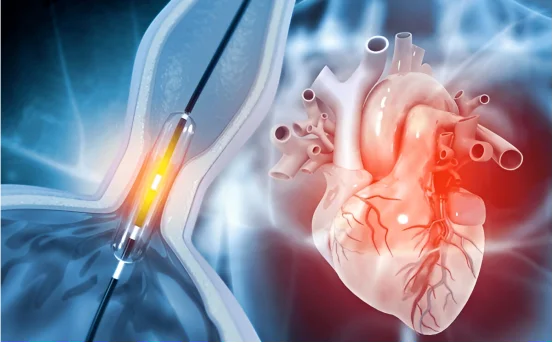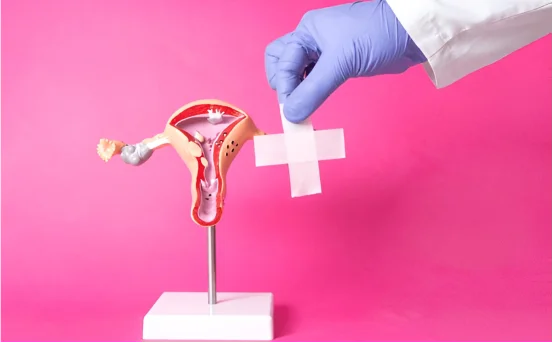Also referred to as coronary angioplasty, Percutaneous Coronary Intervention (PCI) is a procedure carried out to restore the normal blood flow into the heart by opening narrowed or blocked coronary arteries. This procedure is increasingly done for patients who have coronary artery disease (CAD) because it improves chest pain (angina) or helps prevent heart attacks. Understanding the types of percutaneous coronary intervention surgery is crucial for anyone facing heart-related issues.
Globally, PCI is among the most prevalent and efficient use of interventional cardiology. However, not everyone is aware that there are different types of percutaneous coronary intervention, each designed to meet different conditions and severity levels of arterial blockages.
Why Do We Perform PCI Surgery?
There are several types of percutaneous coronary intervention surgery that cater to different medical needs.
The reasons for carrying out a PCI procedure are:
- To relieve the patient’s clinical symptoms like angina, dyspnea, or exertional fatigue.
- To increase perfusion to the cardiac tissue.
- To mitigate the risk of heart attacks in patients who are prone to them.
- To prevent more extensive surgeries such as CABG, which stand for ‘Coronary Artery Bypass Grafting’.
- Primary Categories of Percutaneous Coronary Interventions PCI Procedures
- Let’s look at more of the PCI procedures in detail.
- Angioplasty with Balloon (Traditional Balloon Angioplasty – POBA)
Balloon angioplasty has been considered one of the safest and the oldest methods of PCI. It requires the use of a balloon catheter which is placed in the narrowed artery. Once the catheter is positioned, the balloon is inflated which opens the narrowed arteries.
- Positive side: No stents or other implants are left behind in the artery.
- Negative side: High risk of artery re-narrowing (restenosis) after initial treatment.
- Example: Patients that do not tolerate stent insertion are a common use case.
Stenting of the Coronary Artery
Stenting is easily the most common PCI method today. In Stenting, a stent is placed into the artery afterwards balloon angioplasty is done to widen the artery.
There are two main types of stents:
- Bare-Metal Stents (BMS)
These are uncoated metal stents used to provide unobstructed structural support to the artery.
- Advantages: Lowers chances of acute artery blockage issues.
- Disadvantages: Increase in scar tissue leads to a higher chance of restenosis.
2. Drug-Eluting Stents (DES)
These stents have a coating that releases medication which inhibits the development of scar tissue.
- Advantages: Restenosis is significantly reduced.
- Disadvantages: Long-term blood thinner medication is necessary.
- Drug-Coated Balloon Angioplasty (DCB)
A newer technique, Drug-Coated Balloon Angioplasty involves the use of a balloon which is coated with an anti-proliferative drug. The deflated balloon transfers anti-proliferative medication to the artery wall as it expands which helps prevent re-narrowing.
- Great for: Patients who are unfit for stenting.
- Commonly used: Paclitaxel or sirolimus.
- Rotational Atherectomy (Rotablation)
Balloon angioplasty may not work in cases of calcified or hardened plug-like structures. Rotational atherectomy is used in these cases.
- A catheter with a rotating burr at its tip will rotationally grind away the calcified plaque.
- Clears the way for easier stent placement or balloon inflation.
- Commonly used before placing stents as a pre-treatment.
- Laser Angioplasty
- Uses high-energy lasers to vaporize plaque from arteries and is more precise for complex lesions as well.
- Best for: Complete blockages or stubborn blockages.
- Laser treatments for angioplasty are not usually done today because of newer methods like stenting.
- Cutting Balloon Angioplasty
- A cutting balloon has small blades which make precise cuts in plaque before the balloon is inflated. This improves the expansion of stubborn lesions.
- Trauma to artery walls is reduced.
- Helpful for in-stent restenosis or very fibrous lesions.
- Chronic Total Occlusion (CTO) PCI
CTO is when one or more coronary arteries are completely occluded for more than 3 months. This procedure is very difficult because it often requires:
- Advanced guidewire techniques.
- Specialized imaging and catheter systems.
- High-level experience and skills of the physician.
CTO PCI greatly enhances quality of life for symptomatic patients who aren’t surgical candidates.
Advantages of PCI surgery
- No large cuts or incisions are made.
- Hospital stays are shorter in comparison to CABG.
- Relief from symptoms is experienced more quickly.
- Risk of complications is lower.
- Return to daily activities happens more quickly.
Risks and complications of PCI:
Even though PCI is more safe than other procedures, there is still some risk of:
- Bleeding from the catheter entry point.
- Re-narrowing of the artery (is more common without drug-eluting stents).
- Clots form in the stent.
- Allergic reaction to contrast dye.
Very rarely, heart attack or stroke.
Postoperative Care after PCI Surgery:
Most people experience a fast recovery for the surgery:
- Most patients are sent home within 1 to 2 days.
- 24-48 hours after the procedure, light activity is encouraged.
- Prescriptions for blood-thinning medications are normally issued for a period of 6 to 12 months.
Lifestyle modifications as well as cardiac rehabilitation are also advised alongside them for better long-term outcomes.
When Is CABG More Suitable than PCI?
CABG may be considered for:
- Advanced multi-vessel disease with several blocked arteries.
- Extensive CAD in diabetics.
- Left main coronary artery disease.
- Cases where PCIs have failed.
Conclusion
The introduction of types of percutaneous coronary intervention surgery has revolutionized the treatment of coronary artery disease through safe and effective minimal intervention. Numerous PCI methods are available, including balloon angioplasty, drug-eluting stents, and more recently, laser and rotational atherectomy, allowing customization to each patient’s needs.
A cardiologist can best discuss the types of percutaneous coronary intervention surgery, its advantages, and the expected postoperative course with the patient and family so that they can make an informed decision.























